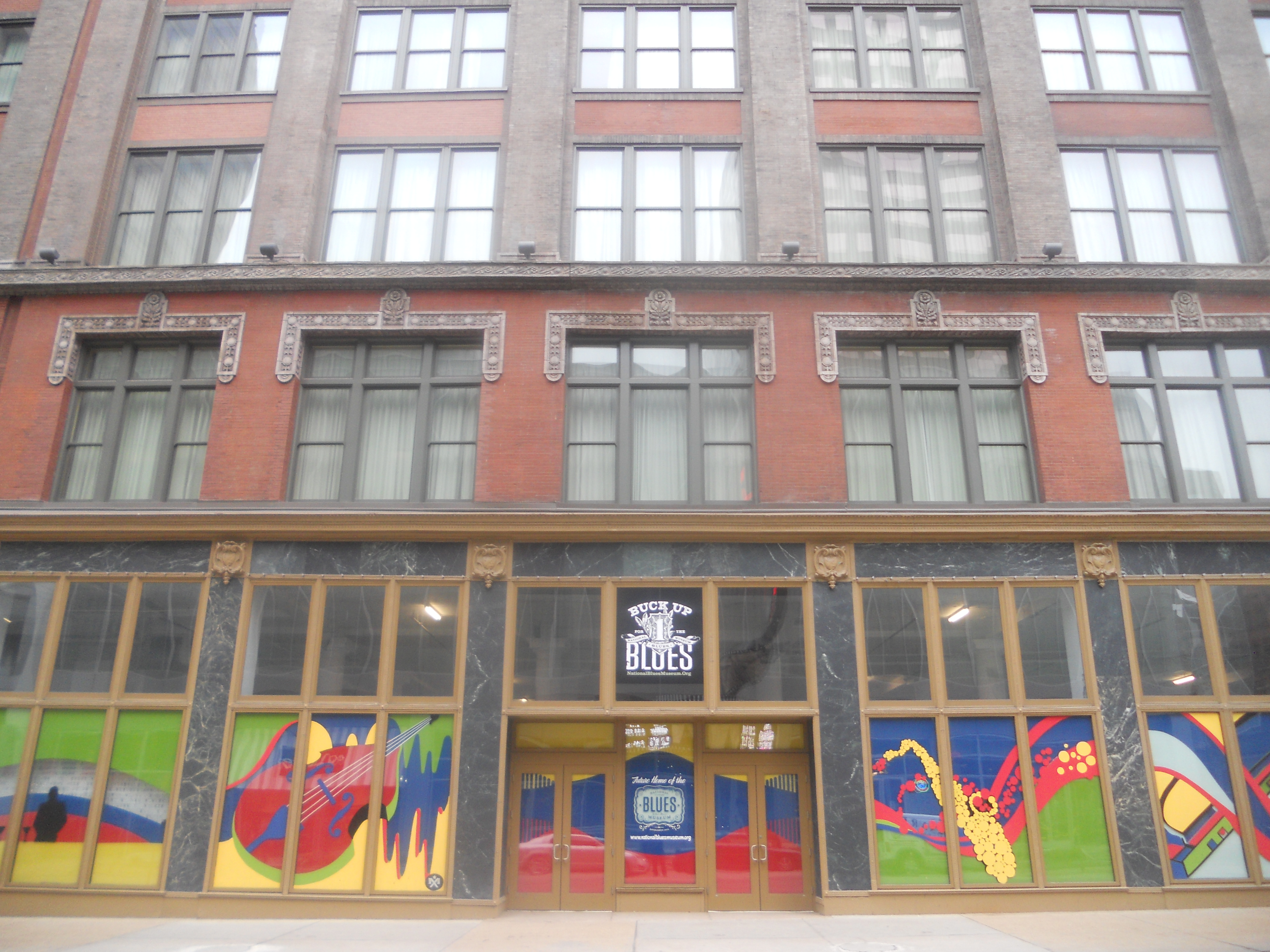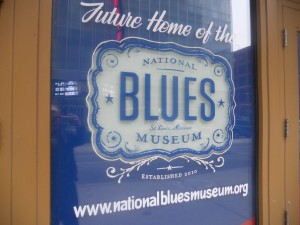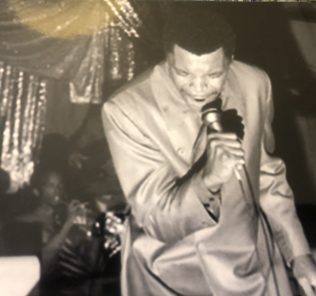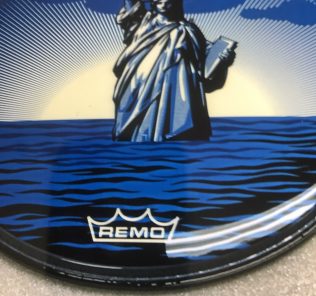St. Louis blues museum moves forward
The National Blues Museum is virtually completed in terms of design and slated to open mid-2015.
The downer for Chicago blues fans is that the $14 million museum will be in downtown St. Louis.
Members of the Chicago music community have talked about a Chicago blues museum almost since Muddy Waters plugged in.
In the summer of 2012 there were rumblings of “The Blues Experience,” a blues museum-nightclub with classrooms to be built in the former Block 37 shopping center on State Street. Last fall it was reported that “Blues Experience” developers Bill Selonick and Sona Wang moved from downtown in favor of being folded into Navy Pier redevelopment plans. The first phase of the $150 million pier redevelopment is slated be finished by mid-2015.
Nothing has happened. A Navy Pier spokesman had no comment. Selonick and Wang did not return repeated calls, although sources say an extravagant interactive Navy Pier blues experience is in the works.
Lots is happening in St. Louis.
The $14 million National Blues Museum will be a 23,000 square-foot educational and cultural facility that anchors developer Amos Harris’ $142 million Mercantile Exchange downtown district.
“It will be in a very cool building originally built as a department store,” Harris told me last month. “One part was built in 1906, the other was in 1915. We converted it into an (212 room) Embassy Suites Hotel and upstairs apartments. We will begin construction on the museum at the end of June or early July.”
Although the museum portion of the building is empty, the ground floor has a wine bar and Harris is planning to add a a barbecue restaurant in conjunction with the blues museum. The building a block west of the America’s Center convention center and one block south of the Edward Jones Dome, the home of the NFL’s St. Louis Rams.
The National Blues Museum would be a blow to tourism plans of Mayor Rahm Emanuel, unless Chicago comes up with a bigger and better blues museum. Emanuel’s goal is to attract 50 million visitors annually to the city by 2020.
But Chicago has no major musical tourism destinations besides a zillilon summer festivals.
“Why is the Rock n’ Roll Hall of Fame in Cleveland?,” Harris asked. “They decided to do it. Why is the Arch in St. Louis? We did it.”
Michelle T. Boone, commissioner for the City of Chicago Dept. of Cultural Affairs and Special Events said, “Congratulations to St. Louis. While the blues is part of Chicago’s DNA, there’s lots of places around the country and the world that have a connection to blues. The more museums we have toward blues, the better blues music will be. We don’t have just one art museum in the country.”
Alligator Records founder Bruce Iglauer added, “In Chicago we tear down our historical places. I was asked by a writer from a guitar magazine to take him around to all the locations of all the blues clubs I hung out at in the ‘70s. They were all vacant lots, except for the Theresa’s building (4801 S. Indiana). There aren’t historical markers. There aren’t plaques, other than 2120 (S. Michigan, Chess Records studio; there is also a marker at the Muddy Waters House, 4339 S. Lake).
“I would love a dedicated blues location in Chicago, but most music museums don’t make money,” Igulauer said. “Supposedly they bring in new exhibits because people go once and don’t come back. I’d love to see something historic as well as a performance situation and maybe a teaching situation so it wouldn’t just be ‘Here’s what used to be’.” Boone added, “We have places where people can go. We’ve got a city populated with clubs and one of the oldest blues festivals in the country. We live it every day.”
What the St. Louis project has that Chicago lacks is major financial support.
In December, the museum received $6 million from Pinnacle Entertainment, Inc. and Lumiere Place Casino in downtown St. Louis. The National Blues Museum website also cites support from St. Louis native John Goodman who posted a You Tube video in support of the museum, Derek Trucks and Chicago blues great Buddy Guy of all people.
Museum co-founder Mike Kociela of the event production team Entertainment St. Louis said, “We asked Buddy for an endorsement at a gig. We’re honored to have his support. He’s not actively involved but he’s in in favor of the musem happening.”
In terms of presentation Harris points to the successful City Museum in downtown St. Louis.
The City Museum is an interactive kids playground in the former Interational Shoe building. The playground features lots of repurposed architectural and industrial objects–and a statue of St. George from Saint George’s Catholic Church in Chicago.
“The culutre of rock spews out artifacts, where the culture of blues doesn’t spew out so many artifacts,” Harris said. “As we’ve been developing this people call with donations. That’s a chunk of it. The City Museum is completely different, but it is the same highly interactive idea that we’re trying to drive towards. In the case of the blues museum we’re leveraging technology to make it highly interactive, where the City Museum they have wild stuff that the kids climb all over. The National Blues Museum won’t be artifact driven. Hopefully one of the experience threads of the museum is as you move through the gallery areas you can create your own blues riff and leave it on a digital graffiti board. We’re hoping we can encourage young folks to pick up blues as a genre’.” Bob Santelli, formerly of the Rock n’ Roll Hall of Fame and Experience Music Project in Seattle has advised the National Blues Museum.
“This could be transformative for downtown St. Louis,” said Harris, a downtown St. Louis resident. “We could put a stake in the ground around music in St. Louis in a way we haven’t done. St. Louis has lots of roots in blues and jazz and we are in some sense a music town, but we don’t market it that way at all.”






This is so true about Chicago! A couple of years ago I put together a bus tour for the Chicago History Museum on the history of jazz – had Joe Segal as co-tour guide. So sad to drive around to these places to see empty lot after empty lot. Most Chicagoans have no idea the roll the city played in jazz development. I will meet musicians and we will talk about jazz history and I will say have you been to Louis Armstrong’s house? They will say “Sure, in NYC.” Nobody knows there is one here as well. Keep the light shining on it Dave!! Kay